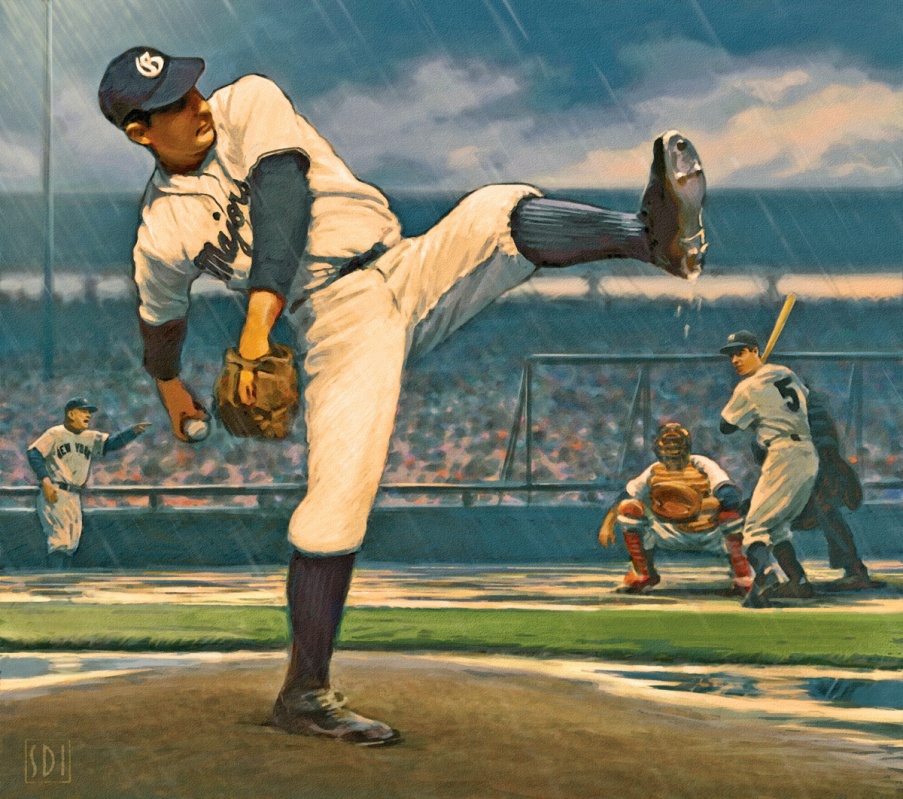Even before the first pitch was thrown, Texas weather threw a curve at the New York Yankees who traveled to Greenville to play the local team, the Greenville Majors, in an exhibition game. The Greenville team had prospered from post-war optimism.
April 10, 1949, dawned cold, windy and wet, creating a stark contrast from the sunny beaches and gentle breezes of St. Petersburg, Florida, where the Yankees trained every spring.
In the late 1940s, many teams barnstormed across the South after spring training, and a Texas League team owner from Dallas exercised his clout to bring the Yankees to Greenville.
Half the Yankees played a game in Beaumont and the rest in Greenville.
The flight from Beaumont to Greenville encountered a storm, forcing Yankees Manager Casey Stengel and the players to land in Dallas and then drive the 60 miles to Greenville in the rain. The storm had rained out a game with the Chicago Cubs the night before, and the assumption was that the Yankees game would be rained out as well.
Despite the weather, nearly 3,000 fans waited in the stands to watch the home team take on the Yankees. The Majors joined the Big State League when it formed in 1947, reconfiguring a football field to baseball and naming it Majors Stadium after Truett Majors, believed to be the first serviceman from Greenville killed in World War II.
A reserved seat ticket cost 75 cents in 1946, the team’s first season, which drew 160,000 fans to games in the East Texas League. The crowds were enthusiastic. The Majors faced Henderson in the playoffs in 1946, but when players and fans became violent, the final game moved to a field in neutral Texarkana.
The Yankees joined the American League in 1903 and became a powerhouse in 1919, when they purchased Babe Ruth from the Boston Red Sox. They won their first American League pennant in 1921 and the World Series in 1923.
With the addition of Lou Gehrig in 1923, they developed even greater power, winning the World Series in 1927, 1928 and 1932.
The Yankees’ dominance of the league continued through the 1940s with the addition of slugger Joe DiMaggio in 1936. The cry was soon heard to “dismantle the Yankees” as they continued to win during the war years despite losing many players to the armed services.
DiMaggio played only two innings in Greenville against the Majors, but he singled in two runs and gave the Yankees an early lead over pitcher Tommy Pullig.
The Majors couldn’t field a full team that day and borrowed Lubbock’s Jackie Sullivan, who doubled in the fourth inning to start a three-run rally against Yankees pitcher Allie Reynolds. After Sullivan’s double, George Reichelt singled, Conk Meriwether drew a walk and Elmer Durrett hit into a force play, scoring Sullivan. Josh Sosh drew a free pass, and Pepper Martin drove in two runs.
In the seventh inning, the mighty Yankees infield collapsed and allowed an unearned run, which decided the contest. Snuffy Stirnweiss failed to field a ground ball by Martin. A bunt pushed Martin to second base, and a throwing error by Jerry Coleman allowed him to slide in safely. Martin then scored to give the Majors an insurance run.
The game lasted less than two hours, but the Yankees left Greenville with the knowledge there were some good ballplayers in Texas.
James P. Dawson wrote the story for The New York Times with the headline: “Yanks Are Beaten by Greenville, 4–3.” The lead for his story was: “Viewed from every angle, the Yankees got a chilly reception here today.”
But the glory was short-lived. Even though the legendary Monty Stratton, a Greenville native, pitched for the team in 1950, the Majors had been failing precipitously, and 1950 was the team’s last year.
The field in Greenville hosted a range of teams until 1964, when the property was sold and the new owner left only the entrance gate standing.
Baseball historian John Mark Dempsey of Texas A&M University-Commerce organized an effort to get a historical marker placed at the site. Walking east down Lee Street in Greenville on a hot summer afternoon, one can almost hear the sharp bark of the umpire, “Play ball!” and remember the day of glory when the local guys defeated the best team in baseball.
——————–
Evault Boswell is a freelance writer and columnist who lives in Greenville.


